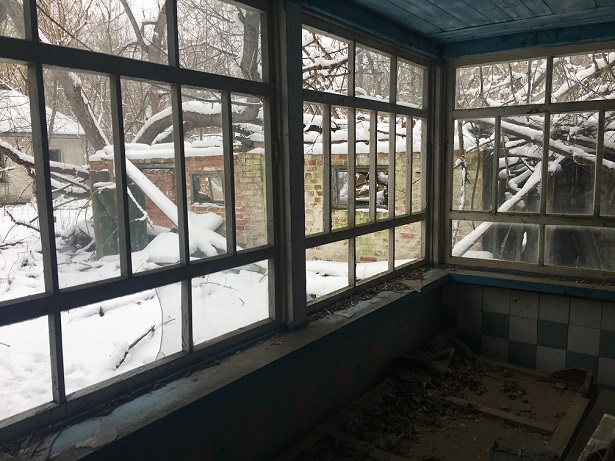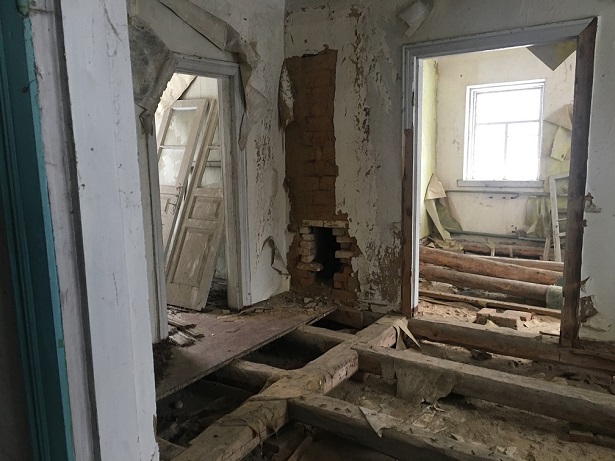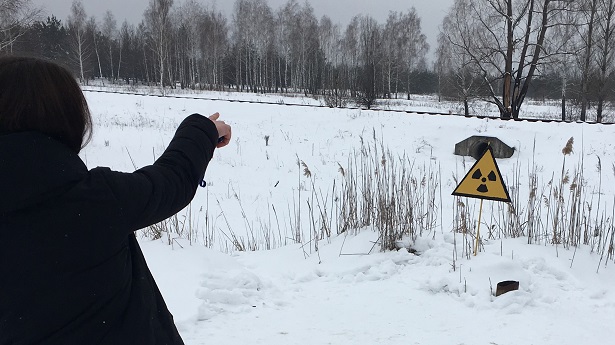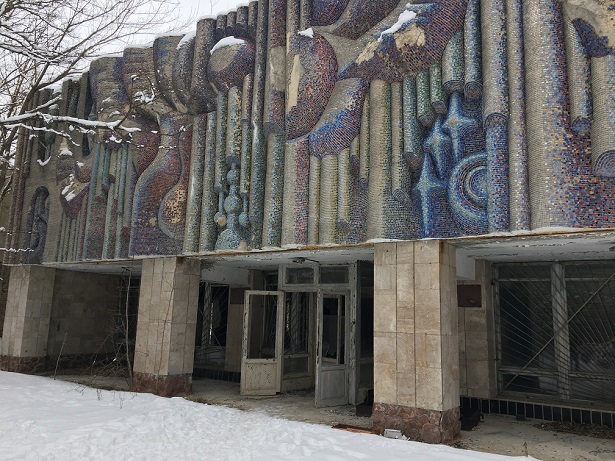david-seddon.com
Chernobyl, Pripyat and villages
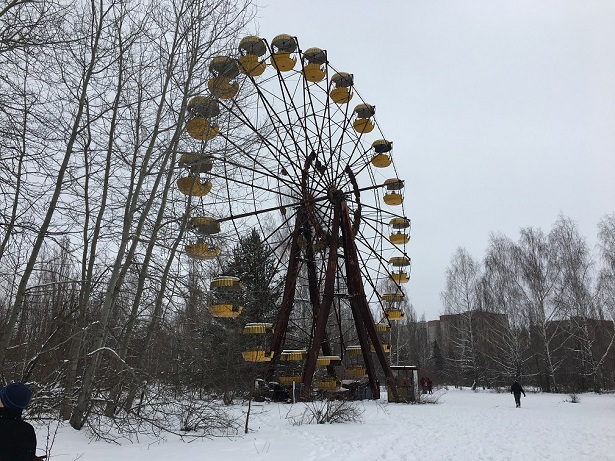
While in Ukraine, I decided to do something I’ve wanted to do for a while - go on a tour to Chernobyl. (In reality, it was one of the main reasons I’d made it all the way over here).
This was the scene of one of the world’s biggest nuclear disasters in 1986. The story is simply, if tragically, told. During a safety test reactor number 4 exploded, sending radiation out into the environment. Eventually - but later than was ideal - the people of the surrounding areas were evacuated, never to return to their homes.
The area has largely been left since then. “Liquidators”, the term for the people the Soviets used to clean up the radiation, have moved through most of it cleaning up what they can, but it’s uninhabitable. There are places where it’ll never be habitable.
The upshot of all this is that there are settlements that have been, more or less, frozen in time. Nature is working on reclaiming them, but in the areas you can walk around you won’t see a McDonalds, Starbucks, or any of the other things modern cities have.
Cheifly among these is the city of Pripyat. Founded in 1970, it was to be an example of how a modern Soviet city should be. With its young population (the average age of a person living in Pripyat was about 26), it was seen as a up-and-coming place, a place where as a young Soviet citizen you would want to live.
Today the whole area is deserted. For 30 kilometres around Chernobyl nuclear power plant, there is an enforced exclusion zone. You cannot legally enter as a tourist without a guide, and you have to pass through passport control to enter the zone.
I went with CHERNOBYL TOUR. I felt a bit like a Special Forces guy as my adventure clothes all seemed to be black (I was very glad for them though; it was extremely cold and snowy) and my rendezvous point with the bus was provided via GPS coordinates. I was pretty excited en route to the bus, but when I arrived and saw the massive nuclear symbol I did start to feel a little uneasy. After all, I was going to a place where people are not supposed to go.
Fortunately the rest of the group showed up soon after. There was our guide, Marianna, who was friendly and welcoming, three other Brits and a couple of Americans, so it was quite a small group which I was quite happy with. One of my fears was that I’d be looking at something, lost in my own world and then look round to see the bus pulling away. At least with a small group there would be less chance of being abandoned in a nuclear wasteland.
We were also issued with Geiger counters, which are devices for measuring the amount of radiation present. I don’t pretend to understand how they work, but at least this way I had something to monitor and gravely make “hmmmm” noises at.
It took us about 2 hours to drive from Kiev to the edge of the exclusion zone. You’re not allowed to take photos of the crossing, but it looked very official with army guys in camoflague gear. We had to wait an age for our paperwork to arrive, but our guide sorted everything out for us. Passports in hand, we then had to cross the border crossing on foot. I was hoping to get a cool nuclear symbol in my passport, but alas they didn’t do anything with it beyond give it a cursory glance.
And that was it, we were in the exclusion zone. Boarding the bus again, we headed for our first stop of the day, the village of Zalissya.
This was quite close to the edge of the exclusion zone and, all things considered, was one of the safer places we went to. Nestled among the trees were rows and rows of houses, doors open, windows mostly smashed. Wildlife had taken over much of the place - even before the explosion it was right on the edge of a forest. Apparently there are a lot of animals in the exclusion zone, and we were told about wolves, elk, deer, wild horses and even the occasional bear.
We were allowed some time to wander around. I cautiously prowled around some of the houses, most of which now had few floorboards. The overwhelming feeling I had was one of absolute silence. If the rest of the group were quiet or far away, there were absolutely no sounds. I mean, nothing. It was unnerving, and when I did find the rest of the group I turned into the annoying chatty guy to break the silence a bit.
It was incredible though. To think that when I was a small child people were living in these houses - over there, that was someone’s kitchen - and in not so very long a time they’ve become what I was seeing today.
I could have spent all day here, to be honest. We were told about 3,000 people lived here in 1986, and there were a lot of buildings we didn’t go into or near, I think for reasons of time.
We passed through another checkpoint - we were now within 10 kilometres of the poweplant. Our next stop was a kindergarden near the destroyed village of Kopachi. Here, we were told, the houses were old and made of wood so they couldn’t be cleaned as the houses at Zalissya were. Instead, they were torn down and buried, with little nuclear signs on the top. These were littered all across the area.
When we arrived at the kindergarden all of our Geiger counters started making their alarm sounds as we started to experience our first area of high radiation. This was troubling to me, as whenever I hear noises like that I tend to look for places to run or where the fire is, but here our guide assured us that if the noise got annoying she could adjust the threshold at which they alarm.
The radiation inside was actually quite a lot lower. I guess they must have kept the windows and doors closed or something. It was certainly very creepy, wandering around having a look at the metal frames of the abandoned childs beds, and the dolls were very unsettling.
After time for photos (and adjusting the now very annoying Geiger counters) we moved on to the city of Pripyat. We stopped off at the city boundary to have a look at the sign for the city limit, and to have a look at one of the burial pits I mentioned earlier.
These pits were not, with the best will in the world, the best thought-out. There were no special linings to the pits they were buried in, so the radiation leaks above and below, and holding our Geiger counters near the sign showed a massive increase. Saying “hmmmm” gravely, I soon made a hasty retreat.
Pressing on to the city itself, we said farewell to our driver and went for what would be our longest walk. Looking at the back of the bus as it drove off was quite a poignant moment - it took a lot of self-control not to run after it waving my arms in the air yelling for it to come back.
I’m glad I didn’t because this was my favourite part of the tour. We started off looking at a cafe that had a tree growing through it, and then some vending machines that looked like they were from a computer game, their rusty fronts hanging off.
I didn’t know before going that vending machines in the Soviet Union at this time didn’t give a cup per person, as we’re used to when getting a coffee. Instead, there would be one cup, you’d buy your drink, then wash the cup from another nozzle and put the cup back. It’s an interesting approach, but one that I’m glad didn’t catch on in the West.
The school was one of the next things we saw. One of the most damaged buildings in Pripyat, a large section of it collapsed due, in part, to the weight of the trees growing on the roof. I found that just incredible. This was not a small building - I could count 4 stories - and yet in a relatively short amount of time it had become a ruin.
Part of it also has to do with Soviet construction techniques. Let’s not forget the Soviet Union collapsed in 1991, just 5 years after the Chernobyl disaster, and that in the first place the emphasis of Soviet construction was very rarely quality; speed and cost were usually the priority, to demonstrate Soviet triumphs over the decadent West.
Everything everywhere was in ruin. We were told parts of Pripyat would disappear completely into wilderness within 5 to 10 years, which was truly awe-inspiring. It just goes to show no matter how permanent something is (and the Soviets were ones for creating cities that look like they’ll stand forever) it can very quickly vanish.
There’s too much to talk about here in Pripyat without writing for a week. We saw so much that it’s kind of difficult to process. Over there, someone years ago met a friend by that statue, went shopping in that mall, maybe went to that post office, all of which were long abandoned. We didn’t go in many of the buildings here, they were in far too bad a condition to safely do so but we did peek in through the windows.
Thankfully, our driver remembered to pick us up, and we went off for lunch at the powerplant. People still work here - removing equipment from the other reactors and so on. This was a bit of a surprise to me, I didn’t think there would be many people but for these guys it’s just a place to work.
The food itself did not look appealing. I’m not the most adventurous with regard to food, so I decided to eat my snacks instead.
From here we moved on to look at reactor number 4 itself. There’s not much you can see - just a huge arc that covers the reactor and stops more radioactive dust escaping. The plan is to use robots to start to dismantle the old core and take away all the material, and my plan is to be Very Far Away when that happens.
I’ve covered the morning in this piece - I will continue the story in a follow-up piece. Before that though, it’s worth taking a moment to remember the people who did their best to contain the disaster, many of which died in awful circumstances.
Remember, there hadn’t been an accident like this before, they didn’t have the right equipment and technology to handle this. In clearing the radioactive waste from the top of reactor number 3, the radioactivity was too much for robots, so they ended up using “bio-robots”, ie, people. They couldn’t be up there for more than 2 or 3 minutes, shovelling the material from the roof to the ground below.
This was a job they had to do - the disaster had also spawned a massive radioactive cloud that stretched from Great Britain to Greece and it simply had to be stopped, to make sure more of Europe was saved. These guys were heroes in my book, and however the accident happened, the sacrifice of these men and women stopped it being so much worse.
Next time we’ll pick up on what happened in the afternoon, and thanks for reading! Written on February 15th, 2018 by David Seddon
